Showing Spotlights 121 - 128 of 237 in category All (newest first):
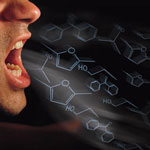 Functionalized graphene holds exceptional promise for biological and chemical sensors. In new work, researchers have shown that the distinctive 2D structure of graphene oxide, combined with its superpermeability to water molecules, leads to sensing devices with an unprecedented speed. The team reports the experimental observation of the unparalleled response speed of humidity sensors based on graphene oxide, which are - to the best of the scientists' knowledge - the fastest humidity sensors ever reported.
Functionalized graphene holds exceptional promise for biological and chemical sensors. In new work, researchers have shown that the distinctive 2D structure of graphene oxide, combined with its superpermeability to water molecules, leads to sensing devices with an unprecedented speed. The team reports the experimental observation of the unparalleled response speed of humidity sensors based on graphene oxide, which are - to the best of the scientists' knowledge - the fastest humidity sensors ever reported.
Nov 27th, 2013
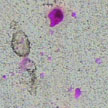 Different strategies for creation of self-healing coatings to prevent corrosion degradation have been suggested. The goal is to significantly reduce the maintenance costs in many industrial applications by applying active sensing coatings. Today we look at a novel sensing coating on the basis of nanocapsules containing pH-indicating agent. The main idea of this work is to create a novel active protective coating which is able to indicate when corrosion processes start under the coatings or in different defects.
Different strategies for creation of self-healing coatings to prevent corrosion degradation have been suggested. The goal is to significantly reduce the maintenance costs in many industrial applications by applying active sensing coatings. Today we look at a novel sensing coating on the basis of nanocapsules containing pH-indicating agent. The main idea of this work is to create a novel active protective coating which is able to indicate when corrosion processes start under the coatings or in different defects.
Sep 30th, 2013
 Thanks to nanotechnology, medical research is moving quickly towards a future where intelligent medical implants can continuously monitor their condition inside the body and autonomously respond to changes such as infection by releasing anti-inflammatory agents. A recent review discusses present and prospective implantable sensors incorporating nanostructured carbon allotropes. The authors describe various applications with an in-depth look at the implantable sensors from the viewpoints of nanomedicine, materials science, nanobiotechnology, and sensor design, both present and future.
Thanks to nanotechnology, medical research is moving quickly towards a future where intelligent medical implants can continuously monitor their condition inside the body and autonomously respond to changes such as infection by releasing anti-inflammatory agents. A recent review discusses present and prospective implantable sensors incorporating nanostructured carbon allotropes. The authors describe various applications with an in-depth look at the implantable sensors from the viewpoints of nanomedicine, materials science, nanobiotechnology, and sensor design, both present and future.
Sep 5th, 2013
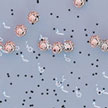 Surface Enhanced Raman Spectroscopy (SERS) is a powerful analytical method that can detect trace amounts of substances, such as narcotics, toxins, and explosives. The detection is based on the fact that molecules of different substances interacting with light from a laser will scatter the light differently, providing a unique spectrum that can be used to identify the substance, much like a fingerprint. Researchers have used a microfluidic device to orchestrate the interactions between silver nanoparticles and methamphetamine molecules in saliva. The microfluidic device allows for the controlled introduction of the sample and the nanoparticles, and the subsequent aggregation of the nanoparticles into hot-spot rich clusters that allow us to detect minute amounts of the drug.
Surface Enhanced Raman Spectroscopy (SERS) is a powerful analytical method that can detect trace amounts of substances, such as narcotics, toxins, and explosives. The detection is based on the fact that molecules of different substances interacting with light from a laser will scatter the light differently, providing a unique spectrum that can be used to identify the substance, much like a fingerprint. Researchers have used a microfluidic device to orchestrate the interactions between silver nanoparticles and methamphetamine molecules in saliva. The microfluidic device allows for the controlled introduction of the sample and the nanoparticles, and the subsequent aggregation of the nanoparticles into hot-spot rich clusters that allow us to detect minute amounts of the drug.
Jul 25th, 2013
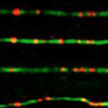 Understanding the purpose of the molecular modifiers that annotate DNA strands - called epigenetic markers - and how they change over time will be crucial in understanding biological processes ranging from embryo development to aging and disease. But just how the markers work, and what different markers mean, is painstaking work that still has left a long way to go. Advancing this research field, scientists have now reported the first direct visualization of individual epigenetic modifications in the genome. This is a technical and conceptual breakthrough as it allows not only to quantify the amount of modified bases but also to pin point and map their position in the genome.
Understanding the purpose of the molecular modifiers that annotate DNA strands - called epigenetic markers - and how they change over time will be crucial in understanding biological processes ranging from embryo development to aging and disease. But just how the markers work, and what different markers mean, is painstaking work that still has left a long way to go. Advancing this research field, scientists have now reported the first direct visualization of individual epigenetic modifications in the genome. This is a technical and conceptual breakthrough as it allows not only to quantify the amount of modified bases but also to pin point and map their position in the genome.
Jul 24th, 2013
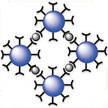 Colorimetric sensing techniques require only the naked eye or ordinary visible color photography and are attractive because of their low cost, use of inexpensive equipment, and above all, their simple-to-understand results. Researchers have now developed a plasmonic colorimetric assay to detect mercuric ion based on urine. Compared to other gold-nanoparticle-based colorimetric systems, it showed excellent selectivity to mercury ions and good sensitivity as high as can be used for mercury ion detection in industrial wastewater.
Colorimetric sensing techniques require only the naked eye or ordinary visible color photography and are attractive because of their low cost, use of inexpensive equipment, and above all, their simple-to-understand results. Researchers have now developed a plasmonic colorimetric assay to detect mercuric ion based on urine. Compared to other gold-nanoparticle-based colorimetric systems, it showed excellent selectivity to mercury ions and good sensitivity as high as can be used for mercury ion detection in industrial wastewater.
Jul 12th, 2013
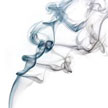 Nanotechnology-enabled, paper-based sensors promise to be simple, portable, disposable, low power-consuming, and inexpensive sensor devices that will find ubiquitous use in medicine, detecting explosives, toxic substances, and environmental studies. Since monitoring needs for environmental, security, and medical purposes are growing fast, the demand for sensors that are low cost, low power-consuming, high sensitivity, and selective detection is increasing as well. Paper has been recognized as a particular class of supporting matrix for accommodating sensing materials. A team of Chinese researchers has now developed low-cost gas sensors by trapping single-walled carbon nanotubes in paper and demonstrated their effectiveness by testing it on ammonia.
Nanotechnology-enabled, paper-based sensors promise to be simple, portable, disposable, low power-consuming, and inexpensive sensor devices that will find ubiquitous use in medicine, detecting explosives, toxic substances, and environmental studies. Since monitoring needs for environmental, security, and medical purposes are growing fast, the demand for sensors that are low cost, low power-consuming, high sensitivity, and selective detection is increasing as well. Paper has been recognized as a particular class of supporting matrix for accommodating sensing materials. A team of Chinese researchers has now developed low-cost gas sensors by trapping single-walled carbon nanotubes in paper and demonstrated their effectiveness by testing it on ammonia.
Jun 10th, 2013
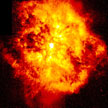 Trace detection of explosives generally involves the collection of vapour or particulate samples and analyzing them using a sensitive sensor system. Various factors, such as wide variety of compounds that can be used as explosives, the vast number of deployment means and the lack of inexpensive sensors providing both high sensitivity and selectivity have made trace detection a very complex and costly task. High sensitivity and selectivity, along with the availability of low-cost sensors, is essential to combat explosives-based terrorism. Nanosensors have the potential to satisfy all the requirements for an effective platform for the trace detection of explosives.
Trace detection of explosives generally involves the collection of vapour or particulate samples and analyzing them using a sensitive sensor system. Various factors, such as wide variety of compounds that can be used as explosives, the vast number of deployment means and the lack of inexpensive sensors providing both high sensitivity and selectivity have made trace detection a very complex and costly task. High sensitivity and selectivity, along with the availability of low-cost sensors, is essential to combat explosives-based terrorism. Nanosensors have the potential to satisfy all the requirements for an effective platform for the trace detection of explosives.
Jan 28th, 2013
 Functionalized graphene holds exceptional promise for biological and chemical sensors. In new work, researchers have shown that the distinctive 2D structure of graphene oxide, combined with its superpermeability to water molecules, leads to sensing devices with an unprecedented speed. The team reports the experimental observation of the unparalleled response speed of humidity sensors based on graphene oxide, which are - to the best of the scientists' knowledge - the fastest humidity sensors ever reported.
Functionalized graphene holds exceptional promise for biological and chemical sensors. In new work, researchers have shown that the distinctive 2D structure of graphene oxide, combined with its superpermeability to water molecules, leads to sensing devices with an unprecedented speed. The team reports the experimental observation of the unparalleled response speed of humidity sensors based on graphene oxide, which are - to the best of the scientists' knowledge - the fastest humidity sensors ever reported.
 Subscribe to our Nanotechnology Spotlight feed
Subscribe to our Nanotechnology Spotlight feed





